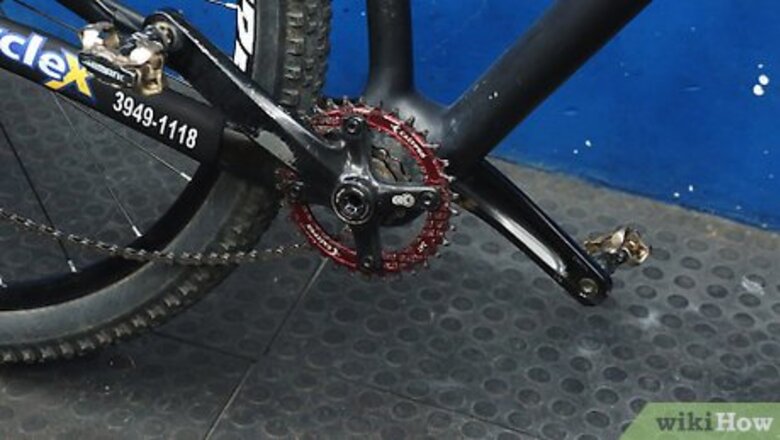
views
Replacing a Slipped Chain
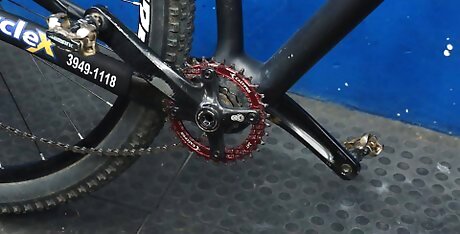
Find the slippage. Sometimes, while riding, the chain will slip off of its intended path, but not break. Because, in this case, the chain is still routed through both the front and rear derailleurs, no special maintenance is needed—all you'll usually need to do is slip the chain back onto its sprocket. When you experience a slippage, get off the bike and look for the slippage. Usually, the chain falls off of the front sprocket but stays threaded through both derailleurs. Look for places where the chain has become jammed against the frame—these jams must be addressed before the bike can be ridden again.
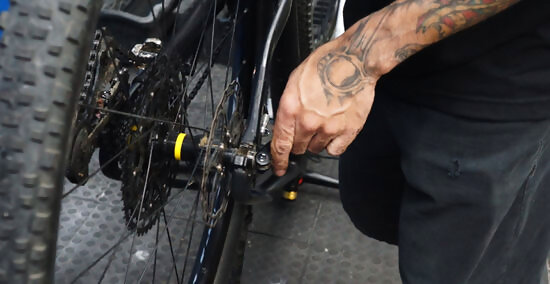
Use the quick release if the chain is jammed. Sometimes, in the event of a slippage, the chain gets jammed between the rear sprocket and the frame. In this case, it's a good idea to loosen the quick release on the rear wheel and undo the wheel nut to loosen the rear wheel from the chain. When you've loosened the rear wheel enough, simply pull the chain out. Open the quick release by first pulling the small lever at the center of the rear wheel. Then, loosen the wheel nut on the other side to loosen the "hold" the rear wheel has on the frame. Once loosened, the chain should come out easily. Don't forget to re-tighten the quick release before riding away. You should be able to close it completely—it should be tight, but not too tight to push all the way down. If it feels too tight, loosen the wheel nut and try again. Likewise, if it's too loose, then tighten the wheel nut.
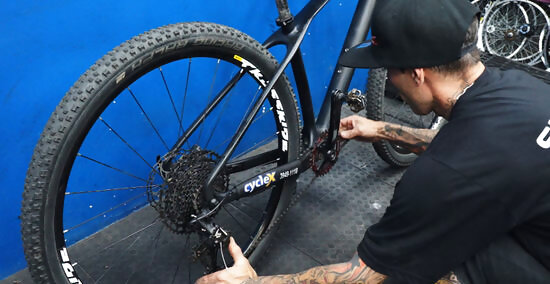
Loosen the chain if your bike has a rear derailleur. For bikes with rear derailleurs, simply slacken the chain and thread it around the front sprocket. On most bikes, the rear derailleur is spring loaded so that it keeps the chain tight while riding. Take advantage of this fact by pushing the arm of the rear derailleur forward to introduce slack in the chain. Then, use this slack to thread the other end of the chain around the smallest of the front sprockets. Release the arm of the rear derailleur and ensure the chain is tight. From here, you can usually simply ride away! Your bike may shift somewhat erratically until the chain shifts into the gear it was in when the slippage occurred.
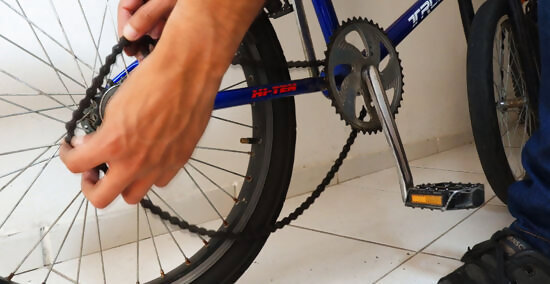
Turn the pedals on a bike without a derailleur. For bikes without a derailleur, catch the chain on the sprocket by pedaling. Many bikes (like "fixies") don't have derailleurs. The easiest way to repair a loose chain, in this case, is to hook the chain onto the rear sprocket, hook as much of the chain as you can on the bottom of the front sprocket, and carefully turn the pedal backward. The chain should "catch" and begin to turn around the front sprocket. When the "caught" portion gets to the top of the front sprocket, the chain should begin running through the bike's gears as normal. Turning the pedals is easier if you elevate the bike's rear wheel. To do so, you can put the bike on a stand or prop up the rear of the frame with any materials on hand. Alternatively, you may get a helper to hold the rear wheel off the ground as you put the chain back on or turn the entire bike upside down.
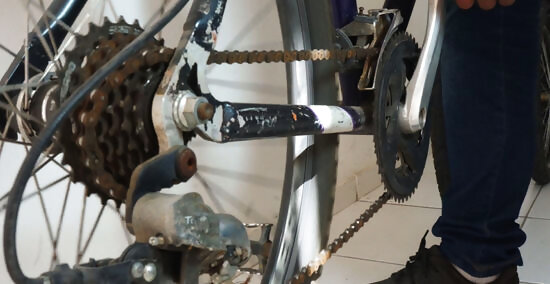
Pedal forward gently until the bike is in the right gear. Get on your bike and pedal forward at a slow speed. If your bike has gears, your chain may "jump" back into the gear it was in when the slippage occurred. Otherwise, keep changing gear until the chain pedals smoothly. Note: on fixed-gear bikes, chain slippage can be particularly dangerous and problematic and is often the symptom of a chain that's too loose. Consider adjusting the tension in your chain by sliding the wheel rearwards before riding again.
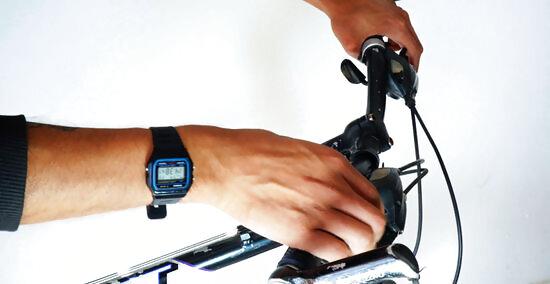
Perform some final checks. Before you resume normal riding, make sure you are in a comfortable gear. If your bike has them, change gears on both the rear and front derailleurs until your chain turns smoothly without producing any noise.
Replacing a Broken or Missing Chain
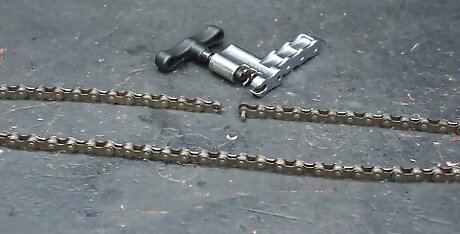
Get a new chain and a chain tool. To replace a bike chain that is broken or that has fallen off completely, you will need to have a new chain that fits your bike and a chain tool to remove the old chain and secure the new chain. You will also need a replacement pin to connect the new chain, but this should come with the new bike chain. You can purchase these items in a sporting goods store or cycling shop.
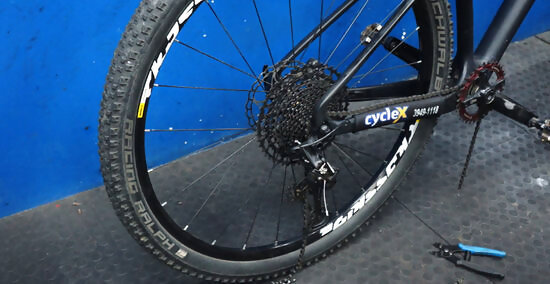
Assess the damage and attempt a repair if possible. Stop and lay your bike on its side with the sprocket up. If the chain is still on your bike, then look for the break in your chain. If the chain is hanging loosely from the sprocket, then it should be easy to find the 2 separated ends of the chain. If the chain has fallen off completely, then you can just start to put on the new chain. For most bike chains, each link is connected to the next by passing a metal pin through the outer "plate" portion of one link and through the inner "roller" portion of the adjacent link. Most bike chains fall into one of 3 categories: Chains with special replacement pins. These chains require a special type of pin from the manufacturer (usually provided when you buy the chain) to repair a break. If you don't carry these special pins with you when you go riding, you may be out of luck in terms of repair options until you can make it to a bike shop. Chains with master links. These chains have a special link with 2 pins that is used to join the 2 ends of the chain. If this link is broken, you may need to wait until you can replace it to be able to repair the chain. Chains with "normal" pins. Older, more traditional chains have uniform pins, any of which can be used to repair a breakage (provided you have a chain tool with you).
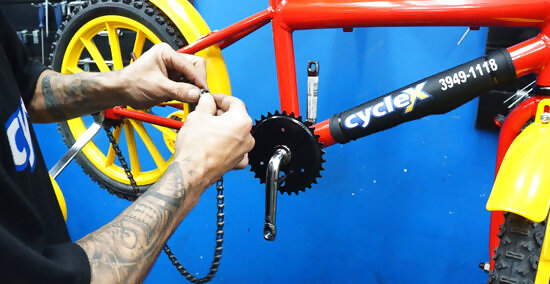
Remove the damaged chain from the bike. If you've decided that your chain will be easier to replace than to repair, the first thing you'll need to do is get rid of the old chain. If the chain has completely split, simply turn the pedals until the length of the chain has passed around the sprocket and can be removed. If the chain is still holding together, you may need to introduce a break in the chain so that it's easier to remove. You can do this with a chain tool. To use a standard chain tool, simply line up one chain link in the tool's internal groove, securing it on the tool's "teeth", then turn the chain tool's handle to drive the tool's point down and push the pin out of the chain. If you want to reuse your chain, make sure you only push the pin far enough out of the way that the 2 links can be separated. Don't push the pin all the way out, as they're quite hard to replace. Once you've introduced a break in the chain, simply turn the pedals to pass the broken chain through the bike's gears. Ideally, you want to buy a replacement chain that's the exact same length as the chain you had before (though bikes with a rear derailleur allow a small margin of error), so now is a good time to count the links in your chain. You should also make note of the type of drivetrain you have, as this determines which chains are suitable. For example, 9-speed drivetrains require 9-speed chains, and so on.
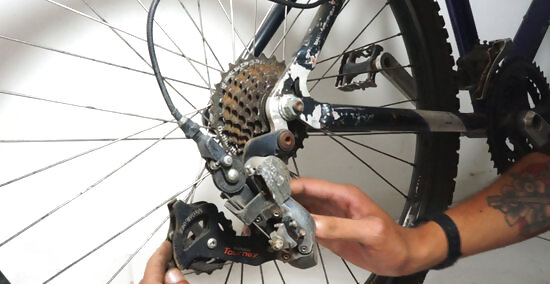
Elevate the back wheel. Next, thread the new chain through your rear derailleur. You may need to turn the back wheel, which is much easier to do if it's not on the floor. If you have a bike rack or hook on the wall of your garage that allows you to hang the bike with its sprockets facing you, use it. If not, you may want to simply prop up the rear of the bike's frame with wood, boxes, cinder blocks, or whatever else you have lying around. Also, make note of your derailleur arrangement. If your rear derailleur has a cable connected to your shifting mechanism, shift into the highest gear (or onto the smallest cog, in the rear). If the front derailleur has a cable connected, shift into the lowest gear.
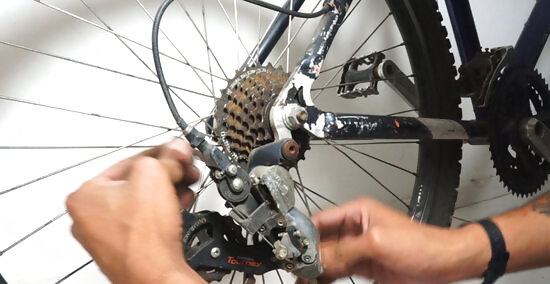
Pull the chain through the rear derailleur. A bike's rear derailleur is the spring-loaded system of gears hanging down below the main rear sprocket on most modern bikes with gears. Threading the chain through this derailleur properly is essential for smooth, safe riding. Take the "female" end (i.e., the end of the chain without a pin sticking out) of your properly-sized replacement chain and thread it around the bottom pulley, then up and around the top pulley. When done correctly, your chain should make a smooth, straight, backwards "S-shaped" path through the derailleur. Make sure the chain isn't catching or resting on anything besides the pulleys—if so, there will be a bump in your backwards "S". There may be a small metal "tab" between the 2 small pulleys in your derailleur. The chain must pass this tab without rubbing on it. Some bikes, like fixed-gear bikes ("fixies") and bikes with a hub gear shifting mechanism, don't have a derailleur. In these cases, simply thread the chain onto the rear sprocket, turning the wheel as needed.
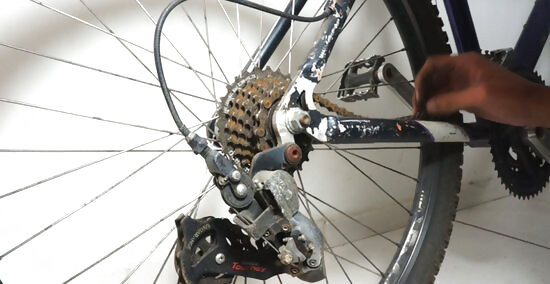
Thread the chain onto the rear cassette. On bikes with gears, the cassette is simply the array of multiple sprockets attached to the rear wheel of the bike. When the chain is properly threaded through the derailleur, pull it up and over the smallest sprocket in the cassette. Make sure the chain is tight and properly threaded through the rear derailleur and onto the sprocket, then pull it through to give yourself some slack at the lead end of the chain.
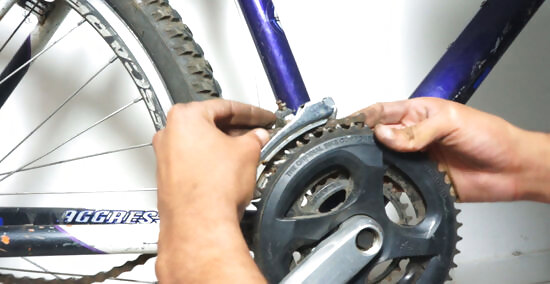
Weave the chain through the front derailleur cage. Most modern bikes with gears have a metal mechanism near the front sprocket that moves to shift the chain from one front gear to another. Thread the lead end of your chain through this front derailleur, turning the rear wheel to give yourself more slack as needed. Again, "fixie" bikes usually won't have a front derailleur, so simply thread the chain around the front sprocket.
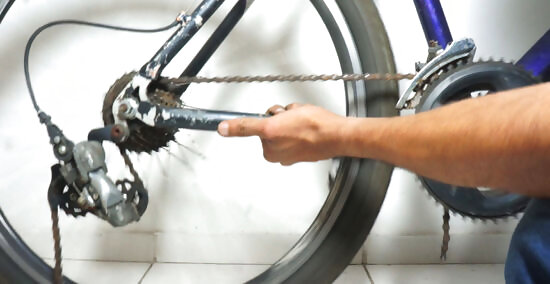
Work the chain onto the front sprocket. Align your chain with the smallest of the front sprockets. Stretch it taught so that it engages securely with the teeth on the front sprocket, then pull it around the sprocket, turning the pedals as necessary to give yourself enough slack.
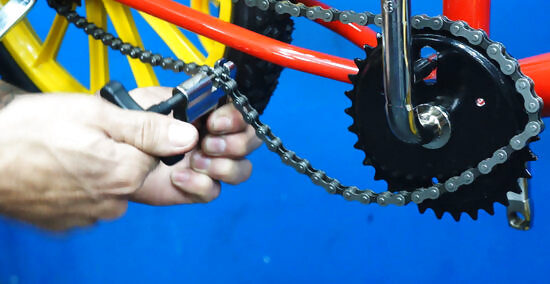
Connect the 2 ends of the chain. Finally, once your chain securely passes all the way through your gear system, you can join the 2 ends of the chain and start riding again. Line up the "female" and "male" ends of the chain in a chain tool (again, available at all bike shops). Be sure that the 2 ends of the chain rest securely in the groove of the tool, hooked on to the "teeth" of the tool. Turn the handle to drive the pin into the chain, connecting the 2 links. Make sure the pin protrudes an equal distance from each side of the link, as even a minor misalignment can cause structural weakness in the chain, potentially leading to another repair. One useful tip is to use a small, thin piece of metal called a "C-hook" to hold the 2 ends of the chain near each other. This makes it much easier to work, as you won't have to worry about holding the chain in place yourself and potentially losing either end. In a pinch, a bent paperclip can substitute for a real C-hook. In some cases, if you connect a chain that doesn’t use a master link, the pin that you use to connect the ends of the chain can make the link stiff. This can cause a hitch or a rough spot in your pedal stroke. To fix this problem, work the links on either side of the stiff link in a direction perpendicular to the way the chain rotates (i.e., on the bias).












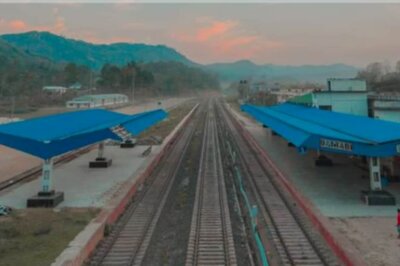

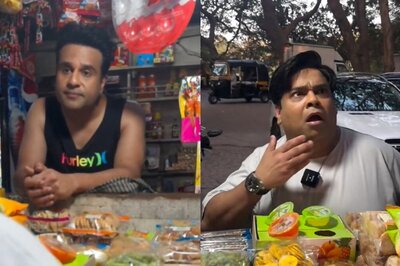


Comments
0 comment